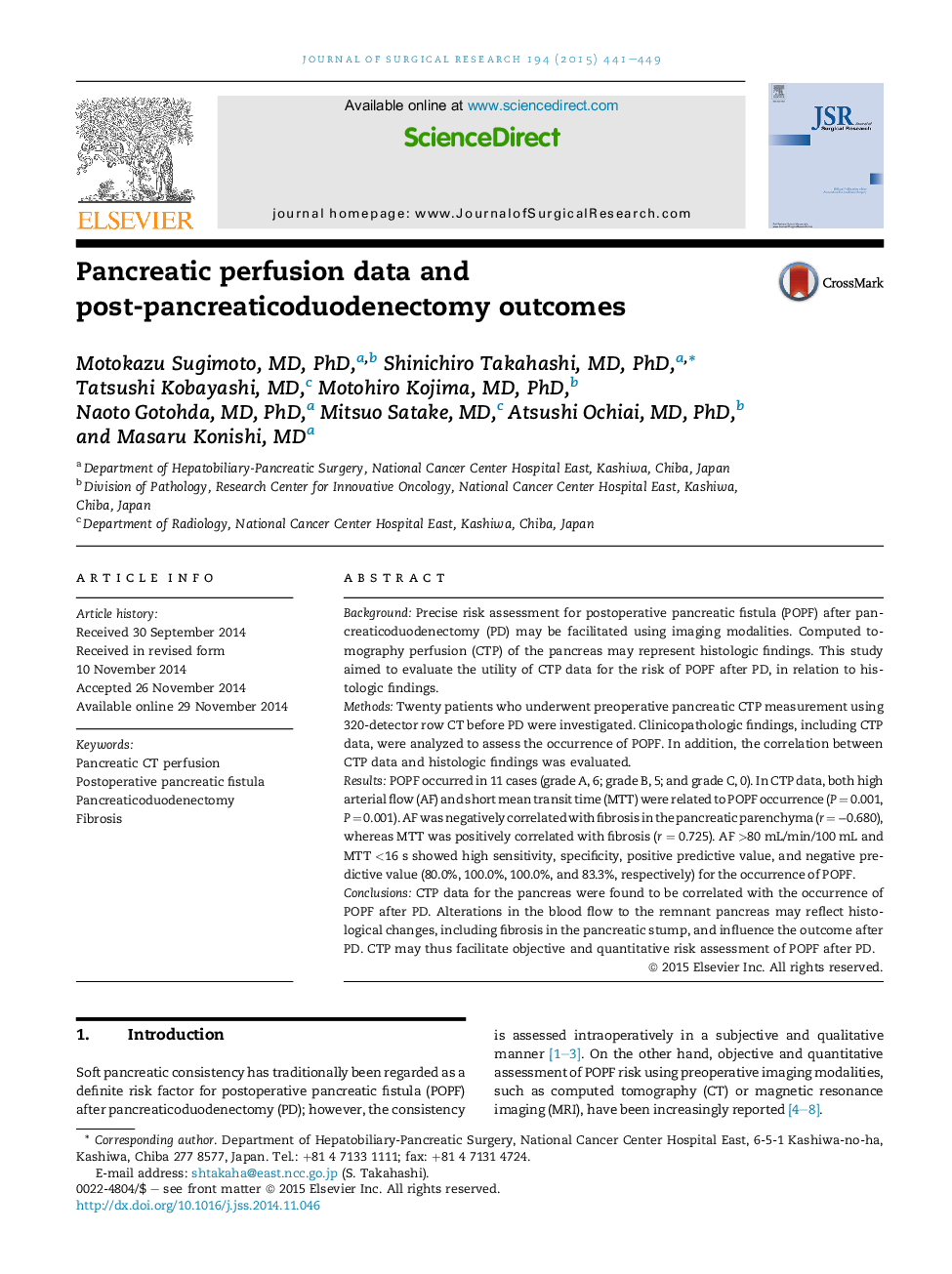| Article ID | Journal | Published Year | Pages | File Type |
|---|---|---|---|---|
| 4299443 | Journal of Surgical Research | 2015 | 9 Pages |
BackgroundPrecise risk assessment for postoperative pancreatic fistula (POPF) after pancreaticoduodenectomy (PD) may be facilitated using imaging modalities. Computed tomography perfusion (CTP) of the pancreas may represent histologic findings. This study aimed to evaluate the utility of CTP data for the risk of POPF after PD, in relation to histologic findings.MethodsTwenty patients who underwent preoperative pancreatic CTP measurement using 320-detector row CT before PD were investigated. Clinicopathologic findings, including CTP data, were analyzed to assess the occurrence of POPF. In addition, the correlation between CTP data and histologic findings was evaluated.ResultsPOPF occurred in 11 cases (grade A, 6; grade B, 5; and grade C, 0). In CTP data, both high arterial flow (AF) and short mean transit time (MTT) were related to POPF occurrence (P = 0.001, P = 0.001). AF was negatively correlated with fibrosis in the pancreatic parenchyma (r = −0.680), whereas MTT was positively correlated with fibrosis (r = 0.725). AF >80 mL/min/100 mL and MTT <16 s showed high sensitivity, specificity, positive predictive value, and negative predictive value (80.0%, 100.0%, 100.0%, and 83.3%, respectively) for the occurrence of POPF.ConclusionsCTP data for the pancreas were found to be correlated with the occurrence of POPF after PD. Alterations in the blood flow to the remnant pancreas may reflect histological changes, including fibrosis in the pancreatic stump, and influence the outcome after PD. CTP may thus facilitate objective and quantitative risk assessment of POPF after PD.
